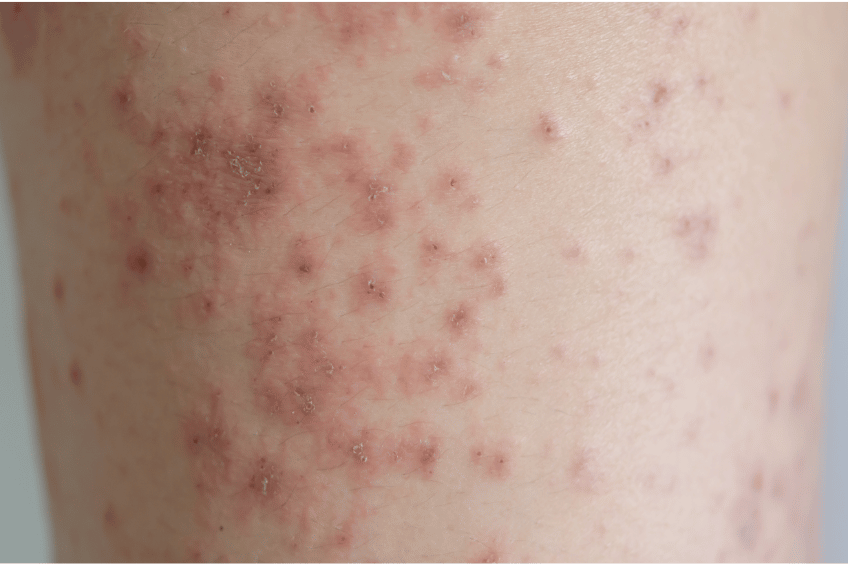Secondary Stage
Without treatment, syphilis is bound to progress to the next stage, which is a bit more pronounced as the disease gets into the blood, skin, liver and other organs. Symptoms typical of this stage tend to appear within 4-10 weeks after primary infection.
Secondary syphilis most often starts with a non-itchy rash on different parts of the body. A classic sign is the appearance of red or reddish-brown spots on the palms of the hands and the soles of the feet. The rash will normally appear after the chancres have healed or are in the process of healing.
The rash on other parts of the body varies in size and shape and will be different from person to person, ranging from hive and pus-filled blisters to whitish, wart-like lesions on moist parts of the body, like the groin or armpits. It can be thick and gray or faintly pink and hardly even visible.
Other prominent signs and symptoms at this stage include:
- Loss of hair (referred to as syphilitic alopecia);
- Fever;
- Sore throat;
- Swollen lymph nodes;
- Fatigue;
- Unintentional weight loss;
- Loss of appetite;
- Headache;
- Vision changes;
- Joint and muscle pain.
The symptoms usually go away within weeks or months, even without treatment. [5, 2]

Latent Stage
The third stage of the infection is also known as a “hidden” stage and is most confusing to patients and frustrating to researchers. During this stage, there will be no visible signs of syphilis, but the infection will still be active in the body.
The stage is further divided into two sub-stages – early and late.
Early latent syphilis usually starts within 12 months following the infection. It is common for 1 in 4 people to experience a relapse of secondary syphilis during this stage, and they are still contagious.
Late latent syphilis is when the onset of the disease was more than 12 months ago. This stage can last for years, even for the rest of the patient’s life, with no evidence of disease. It is unlikely to get another person infected at this point. [5, 2]
Some people may relapse and go back to the secondary stage, re-experiencing the symptoms. It is possible to go through the secondary stage several times, each time returning to the latent stage. [7]
